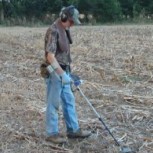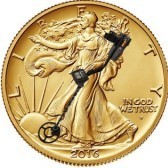-
Posts
6,111 -
Joined
-
Last visited
-
Days Won
32
Chase Goldman last won the day on November 25 2023
Chase Goldman had the most liked content!
Recent Profile Visitors
The recent visitors block is disabled and is not being shown to other users.
Chase Goldman's Achievements

Platinum Contributor (6/6)
11.6k
Reputation
-
Exactly, in the grand scheme of things, metal detectors are a shortcut to finding treasure you can't see. The alternative is simply digging holes (based on research or other relevant clues (e.g., surveys or probes) or at random) - which is what miners, prospectors, some relic hunters, and archeologists do. We keep adding features to detectors add more shortcuts (i.e., cherry picking), but at some point you are just left with the trash and you need to do the hard work (i.e., dig up and recover the "trash" to ID it or get it out of the way) if you want to have the hope of squeezing any more treasure out of the site.
-
The short answer is yes. That's why ground compensation and ferrous discrimination/ferrous bias are more effective with multifrequency detectors. Without multifrequency there is no iron bias and high mineralization ground is harder to tame. I think the issue is that it's a lot easier to identify the frequency-based signal processing deltas for ferro-magnetic targets than it is for purely ferrous targets and the signal processing has to really work hard to identify those small signature changes AND differentiate them from noise. Again, this is where applying machine learning might provide a leap.
-
I understand where @IBMe is coming from. It's good to see the perspective and out-of-the-box ideas of newcomers to the hobby who are not biased by being steeped for years in the technologies and features that the detector manufacturers feed us. Technology is not holding this idea back, because it has been tried before. This is more about human biology (how humans process sensory input) and human factors engineering (how to present information in a manner that enables efficient and effective processing by a human) than it is about technology. Furthermore, it probably makes more sense to directly "visualize" the processed target signal rather than the processed audio from that processed target signal. And guess what, that has also been done with the various target trace implementations. The fact is, target audio is no accident, it is designed to provide the detectorist with a lot of target information that is embedded in the nuances and subtleties of the audio signal (volume, tonality, harmonics), and with repeated "training" and "muscle memory" via target recovery and audio conscious and subconscious signal association, enables the detectorist to learn those nuances and become even more effective than what can be visually displayed and interpreted on the fly. That is not to say that visual target representations are not effective. Of course they are, as evidenced by the more sophisticated target trace displays successfully used by detectorists on high end detectors. But like I said, those are processed from the "source" target signal, rather than secondarily from the processed and generated audio waveforms. Necessity is the mother of invention, as they say. And the need to discover buried ordnance in the wars of the first half of the 20th century was the real the impetus for refining the induction balance and pulse induction metal detecting principles that are also used in the hobbyist detectors of today. It is really defense and security applications, followed by gold prospecting that keep the technology progressing for the hobbyists. If defense or security applications can be more effective with more sophisticated visual target representations, you can believe the detector manufacturers will invest and leverage that technology for hobbyist applications, if it is cost effective. They key to "visual" target representation, whether you do that from the processed target signal directly or from the processed target audio, is determining how to effectively visualize the target attributes in a manner that enables the operator to enable the operator to efficiently, unambiguously, and reliably interpret those visual queues and to effectively integrate them with the audio target information they are also getting (without confusing the operator). If the graphic visual target implementation can be picked up by the operator rather naturally with little need for "training" (i.e., swinging the detector for hundreds of hours before it "clicks") then that is a bonus. There have also been incremental advances in coil winding technology that have improved coil performance (depth and sensitivity) and ergonomics (weight). Discrete tube-based circuits, gave way to semiconductor electronics, which fostered in more compact integrated circuits that enabled more sophisticated target processing in the form of rudimentary ferrous discrimination and ground effect compensation circuits as well as more sophisticated visual and audible target identification. High speed digital signal processing and power electronics ushered in even more sophisticated target ID interfaces as well as enabling a greater ability to separate targets in high target density environments (high recovery speeds vs. depth), generate higher transmit powers with less weight and heat, enabled more sophisticated EMI cancellation, and also enabled advanced features like the myriad of simultaneous multiple frequency transmission protocols that exist today. The next enabling technology for advancing the sophistication of both visual and audio target ID representations from where they are today probably resides in the detector designers' effective harnessing of the power of artificial intelligence/machine learning. Imagine a detector that gets smarter/more effective at target identification (and has the ability to evolve how it presents that more effective data to the detectorist) the more you swing it. That is probably the next frontier or evolution/revolution in advancing the state of the art in metal detection. At least that's my take.
-

Hunting With The Garrett Apex
Chase Goldman replied to Bob Sickler's topic in Garrett Metal Detectors
Agree! -

Hunting With The Garrett Apex
Chase Goldman replied to Bob Sickler's topic in Garrett Metal Detectors
Would like to return to this thread after the "storm" arrives. I'm thinking a lot of the folks who thought the Apex just slightly missed the mark for their detecting environment are rooting for Garrett to close that remaining gap with their next generation VLF detector design. -
Yep. Forgot about that. Any future XP detector generational design iteration will be required to have USB C. But they should just do it because its the right thing to do. Its a much more capable standard including the ability to operate at voltages higher than 5 VDC which can be leveraged to provide more efficient charging for more energy dense battery designs (perhaps facilitating a 10x5 coil, and now that I think about that, the fact that they would have to add USB-C compatible interface to that component may be another thing that is causing them to drag their feet).
-
They need to change the coil charging clip design, definitely. It is interesting they went USB C on the new Xtreme Hunter coil. The problem with a magnetic connector on the coil itself would be that it would eventually magnetize and collect a ton of magnetic oxide particles and other magnetic debris, risking damage, unreliability, or overheating during charging (due to a high resistance connection) and a debris cleaning/removal hassle for the end user to avoid these issues. But there are a ton of more elegant coil charging interface solutions that could be incorporated going forward and many that could also be backfit onto the existing coils. XP should make a decision to just rip the bandaid off and move to USB C, while at the same time designing a better coil charging solution.
-

New Pulse Induction Detectors From Nokta
Chase Goldman replied to Luis's topic in Nokta / Makro Metal Detectors
Said like a true detector addict in denial, Simon. And being one myself, I don’t believe a word of it. -

Hunting With The Garrett Apex
Chase Goldman replied to Bob Sickler's topic in Garrett Metal Detectors
I did, that's why I paraphrased you in my post. Basically, it's not the tool you chose to use that necessarily makes the most difference (although in some environments, like salt water and hot dirt, specific tools may not cut it) but how and where you use it. Totally agree with that, Garrett's personalized customer service in the US is unrivaled. -

Hunting With The Garrett Apex
Chase Goldman replied to Bob Sickler's topic in Garrett Metal Detectors
Good point regarding the ground conditions. Some detectors that do great on neutral ground, cannot handle that environment, requiring a different tool, usually a PI. -

New Pulse Induction Detectors From Nokta
Chase Goldman replied to Luis's topic in Nokta / Makro Metal Detectors
Knowing how Minelab will typically react, I say we call it...wait for it... THE NOKTA LITIGATOR No other detector can do it justice! -

Hunting With The Garrett Apex
Chase Goldman replied to Bob Sickler's topic in Garrett Metal Detectors
At the time Apex came out, Apex was not only the least expensive simultaneous multifrequency (SMF) detector it was also the least expensive detector featuring selectable single frequencies and I praised Garrett for finally showing up to the party with a compelling Detector to go toe to toe with Minelab. It was at the time a great value for a very capable detector. Garrett was transparent regarding what user expectations should be regarding its capabilities by appropriately associating it with the Ace product line. I considered it to be more than an Ace level but not quite as feature rich (and obviously not waterproof) like the AT series. Make no bones about it, though, the Ace series doesn't mean "entry level" and "lacking performance" it mainly means simple to operate and great value. As you say, Bob, detecting is more about having a decent site (location) and getting your coil over the target (coverage) and being proficient with and confident in whatever detector you use and less about cost and features, bells, and whistles. I grant you that when XP then came out with its SMF answer with the D2 and it's typical stratospheric pricing, especially compared to the Equinox and Apex it was fair to highlight the huge cost Delta to make an argument for comparative value. But 3 years later, it is kind of a stale argument, for two reasons. One was already pointed out but you appear to have dismissed it. Namely, there are a myriad of significantly less expensive and capable D2 configurations centered around the WS6 as the master controller. This highlights one of the most significant strengths of the D2 platform which is wireless component interoperability and reconfigurability which allows the end user to optimize value, capability, or weight as they see fit. But I'm not here to force you to eat a croissant you don't want, I just wanted to point that out for context. The second reason I would not necessarily beat the Apex value/cost drum too loudly is that Nokta came along and blew everyone out of the water with their price point for the Legend SMF, basically an Equinox 800 Plus for half the cost...with a great selection of accessory coils. And they continue to update its firmware with more capability and features to this very day. Again, I am not saying any one detector is "better" than the other here, just commenting on this whole cost, value, "3x this", "4x that", focus. Cost and value are important but each major brand offers SMF detectors (XP and Minelab included) at price points similar to Apex for their various SMF offerings. Therefore, using cost as an argument for or against is a point that is easy to undercut regardless of whatever detector you are talking about. At this point with SMF detectors basically having similar performance capabilities, hair splitting seems to be the main MO for touting one detector over the other. Getting back to basics, the best detector is the one you want to use and do use most frequently. After all the hot air I just expelled, I am very excited to see Garrett's answer to Apex. Hopefully, the gathering "Storm" at Garrett will wow me as much as the Apex and Axiom product ammouncements once did. -

New Pulse Induction Detectors From Nokta
Chase Goldman replied to Luis's topic in Nokta / Makro Metal Detectors
Iron ID/Disc/Blanking -

New Pulse Induction Detectors From Nokta
Chase Goldman replied to Luis's topic in Nokta / Makro Metal Detectors
Progress, but lets not get too optimistic on the timeline. The last time we went through a Nokta naming contest, the Legend showed up 3 years later. Contest started September 2018 Name picked September 2020 Detector Announced Summer 2021 Detector Released December 2021 Perhaps they learned not to draw this out as much this time.... -
What TNSS is saying is that if you have Relic set up to give you a pure iron signal in the nail/nickel/swing configuration shown (as expected when you swing down the barrell of the nail) and then you transition to any other program (other than Gold Field) and then return to relic, you will get intermittent non-ferrous audio and TIDs (that don't correspond to the nickel TID, they look to be in the high 80's when I was able to catch a glimpse of the screen). Indicating that perhaps IAR has been altered which may be causing iron falsing or some other unknown bug/issue. Anyway, despite several attempts with the same setup, I have not been able to replicate TNSS's "bug" at all. Not even close. I can make blips occur with certain coil edge manipulations (even without transitioning out of Relic) but with a normal swing down the barrel of the nail, solid iron tone and ID no matter how many transitions out of relic or other non-relic program adjustments I do. Maybe he has a coil issue or a buggy install. Though Jeff's statement that TNSS has seen this on previous versions, indicates it may not be unique to ver 2.00, pointing again to perhaps a TNSS unique hardware or configuration issue. I don't have the "issue" and really am not losing sleep over it, regardless based on my tests and hundreds of successful hours on v 2.0 Relic Program (yes, it's my "Go To" program). And I do a lot of target interrogation which has me frequently transition out of relic. I would be interested to know if anyone else has been able to replicate it (other than the one or two folks who commented on his channel who said they saw it too). I'm actually kind of surprised by people just taking these findings (mine included) at face value as gospel rather than proving to themselves whether they are present for their specific setups based on how simple the test is to set up and run. Especially since they may manifest differently for different combinations of equipment and targets. Without additional replication by other D2 experienced folks, I'm attributing this something unique with TNSS's gear. Whatever the case, TNSS has done the right thing and has passed this on to XP to sort out and address, if necessary. XP has not acknowledged an issue but they are looking into it at TNSS's request.













